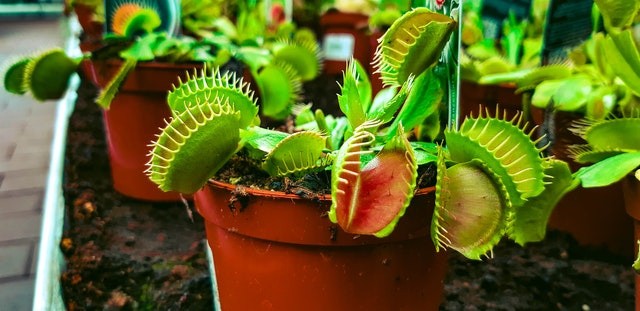A new study shows that Venus flytraps (Dionaea muscipula) attract insects with their fragrant nectar.
Scientists have discovered that Venus flytraps attract insects with their fragrant nectar before snapping and killing their prey. They do this by generating a strong magnetic field.

The Plants Produce Magnetic Field
The magnetic field of the plant is far weaker than that of the earth. This magnetic field is believable to be a by-product of electrical energy that passes through its leaves instead of serving a purpose for the plant. According to Anne Fabricant, a doctoral candidate at Johannes Gutenberg University Mainz and the Helmholtz Institute Mainz in Germany, "it is one of the first fields of the sort ever detected in plants".
Fabricant told Live Science that "whenever there is an electrical activity, there ought to be magnetic activity". Anything that has an electrical current also produces a magnetic field; and that comprises humans, plants and animals say the law of electromagnetism. It is a usual occurrence among living things and there's even a term for it "Biomagnetism". Because much research focuses on equivalent magnetic fields in humans and animals, much is yet to be known about biomagnetism in the world of plants.
ALSO READ - Venus Flytrap Count to Catch and Eat Prey
Tiny Glass Sensors
According to a statement, Fabricant and her team in the new study used atomic magnetometers called "tiny glass sensors" which hold a vapor of atoms exposed to magnetic fields. Electrical energy in the form of an action potential is then triggered to pass through the Venus flytrap. In the human nervous system and animals where action potentials occur, there are fragments of electrical energy that make it possible for cells to commune.
Fabricant says that there is an essential function for the venus flytrap served by the action potentials, prompting the plant to close its leaves whenever it is close to insects that touch-sensitive hairs on the leaves of the plants.
But the plant is revived in another way by the researchers, with the use of heat. They discovered that the venus flytrap created a magnetic field up to the durability of 0.5 picotesla when revived. According to the statement, it is close to the levels generated by nerve impulses in animals.

SQUID
Fabricant said that the single-cell algae and bean plants are the two plants that magnetic fields have been revealed in, previously in this study. "They were measured using SQUID (superconducting-quantum-interference-device) magnetometers, which are just as voluminous as their names and require to be cooled at very low temperatures", said Fabricant.
"Plant-biomagnetic measurement is exemplified using atomic magnetometers and this is very exciting, these atomic magnetometers operate at room temperature and can be portable and small-scaled", Fabricant added. "Some indication about the ways electric currents are allowed in the trap is due to the fact that we were able to detect magnetic fields". Tinier magnetic fields in other plant species are hoped to be measured by researchers.
RELATED ARTICLE - No Escape For Mosquitos
For more news, updates about Venus Flytraps and similar stories, don't forget to follow Nature World News!
© 2025 NatureWorldNews.com All rights reserved. Do not reproduce without permission.





